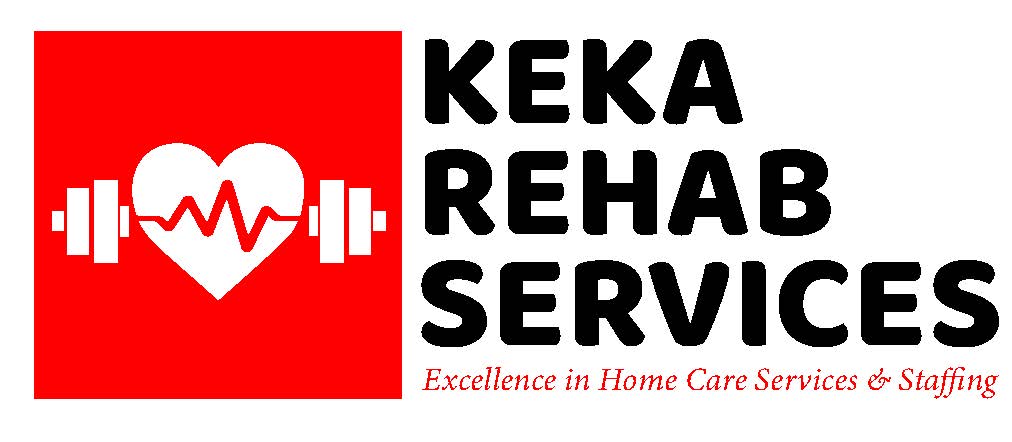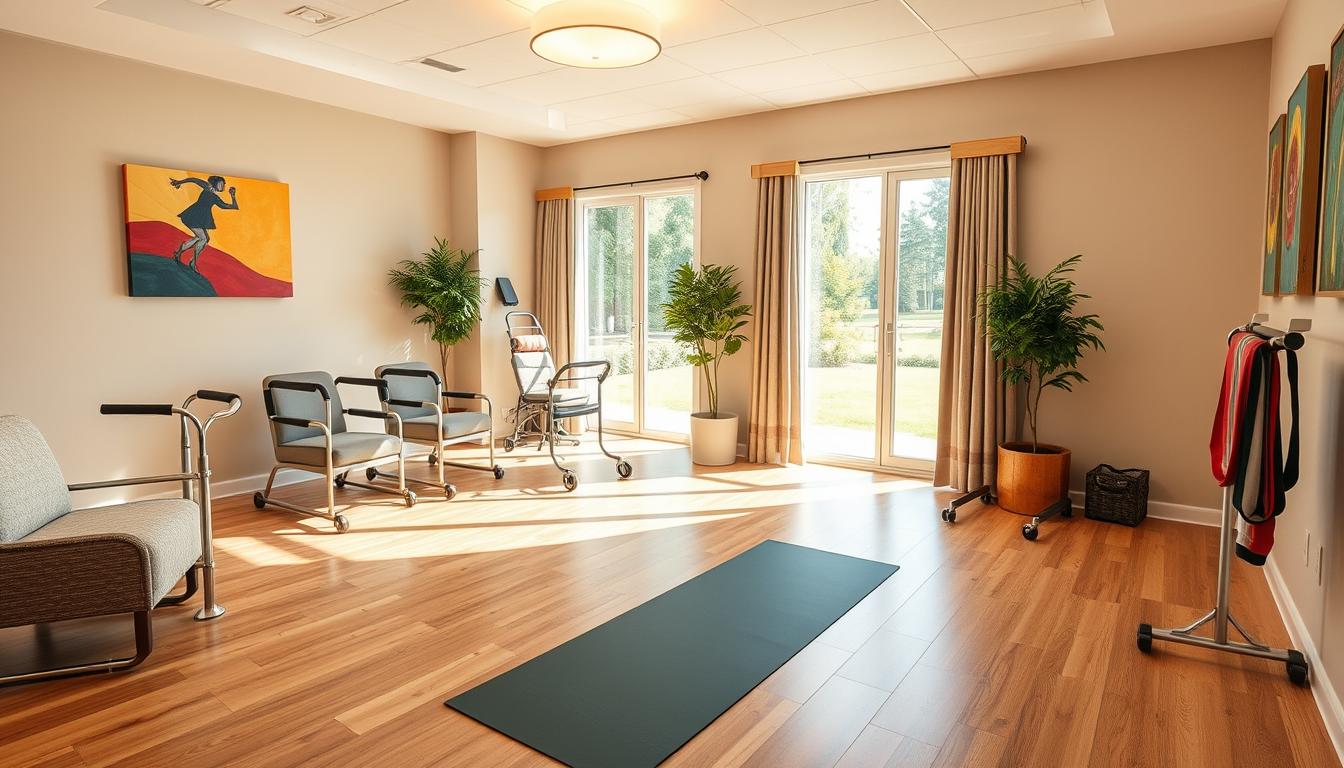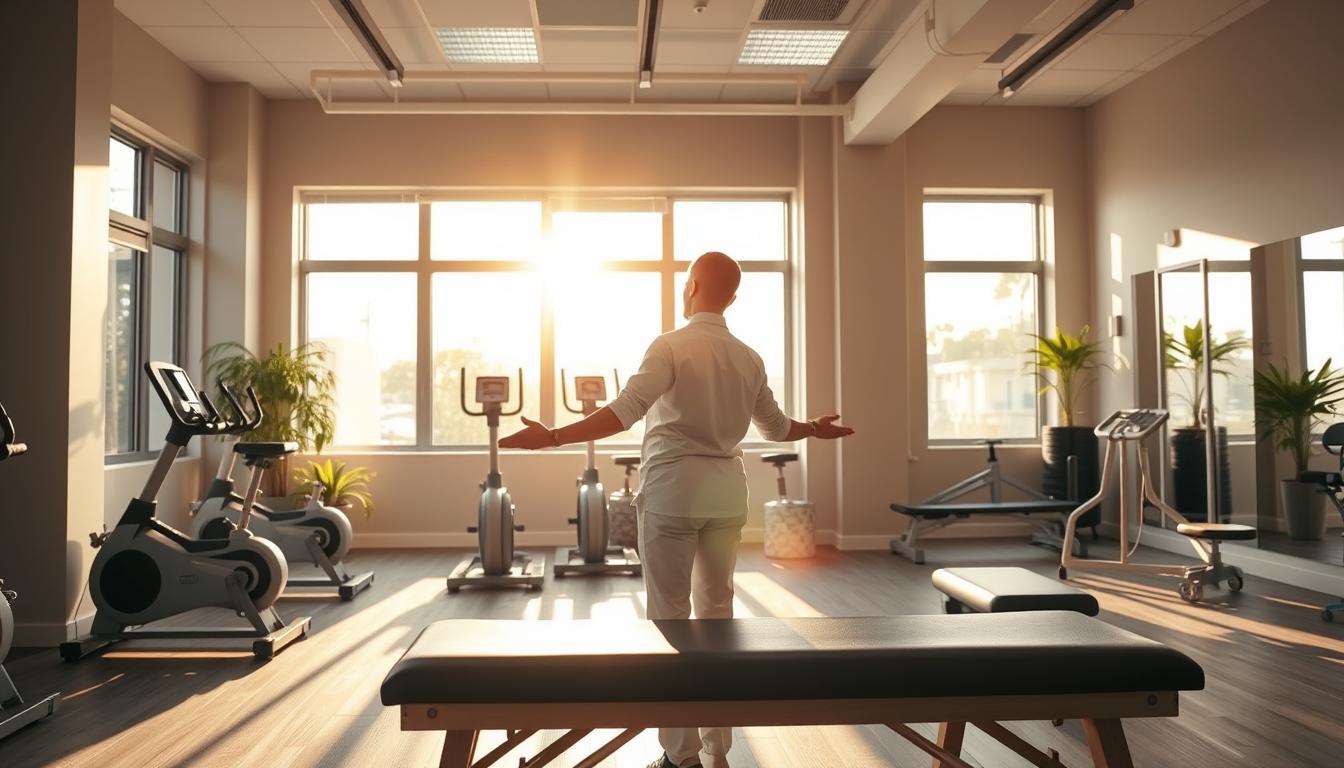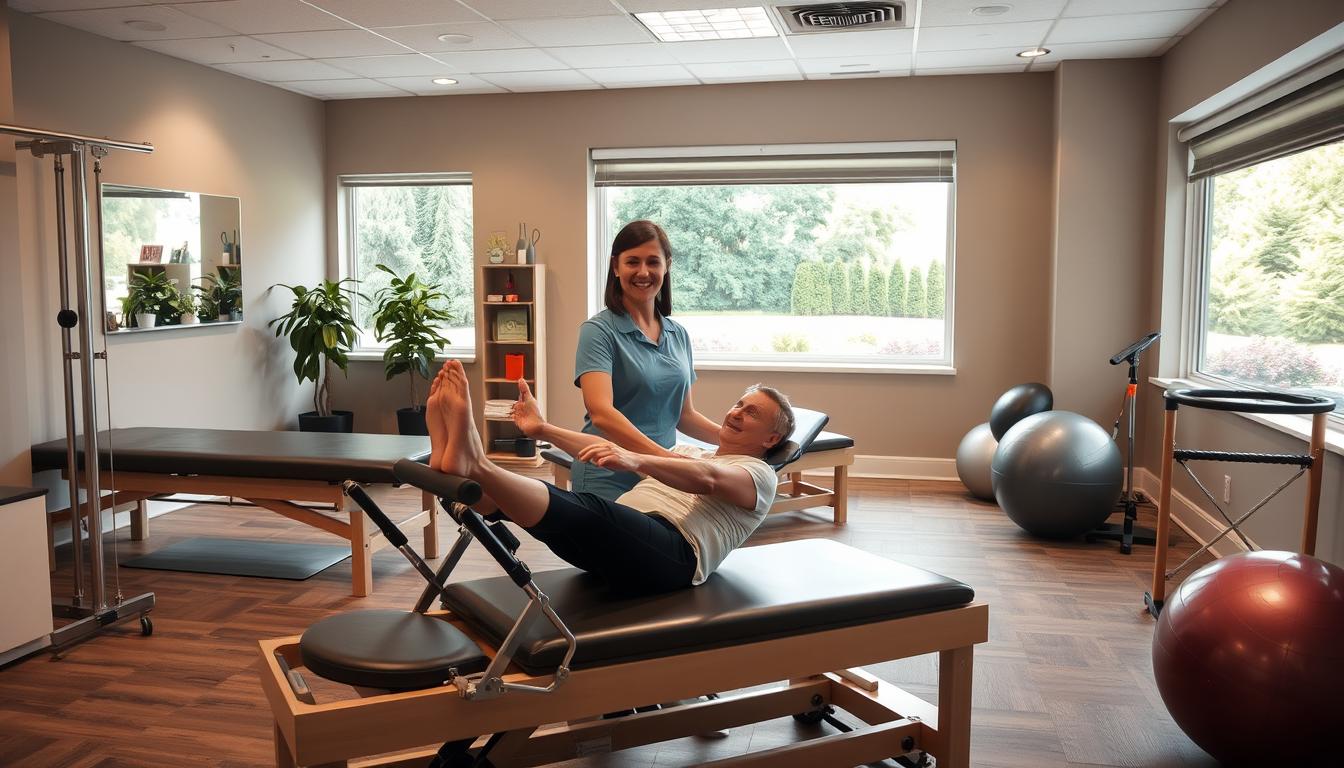Did you know that 36% of adults over 65 fall each year, and 20% get serious injuries? This shows how vital physical therapy is for seniors. Our bodies change as we age, but treatment can help us stay independent and live well.
Physical therapy for seniors is more than just helping them recover. It’s about preventing falls and giving them power. Therapists work with older adults to build strength, balance, and mobility. They help with arthritis, Parkinson’s, and osteoporosis, making everyday tasks more accessible and safer.
Geriatric care experts are key to this effort. They create exercise plans and balance training that meet each person’s needs, lowering the chance of falls and boosting physical function. They also help make homes safer, suggesting equipment to support living independently.
Senior fitness programs do more than improve physical health. They can lessen chronic pain, maybe even stop surgery, and cut down on pain medications. This approach to health boosts physical and mental well-being and helps seniors stay connected with others.
Getting therapy early is essential in senior care. Starting therapy before accidents can keep or even boost physical skills. This can significantly lower the risk of falls and injuries, helping seniors stay active and independent longer.
Key Takeaways
- Physical therapy reduces fall risk and improves balance in seniors
- Geriatric specialists tailor exercises to individual needs
- Early intervention is crucial for maintaining mobility
- Therapy can alleviate chronic pain and minimise medication dependence
- Regular sessions enhance the overall quality of life for older adults
Understanding Geriatric Physical Therapy
Geriatric physiotherapy, which started in 1989, helps older adults aged 65-90 improve their physical health and live better lives. It is key in fighting age-related health issues.
What is a geriatric clinical specialist?
A senior clinical specialist is a physical therapist with special training for older patients. They check and treat health problems that come with ageing. They also advise staying safe at home and keeping well as you age.
Importance of specialized care for older adults
As we age, our muscles and joints weaken and move less quickly. Geriatric physical therapy uses exercises and unique treatments to help.
Special care helps seniors stay independent and avoid muscle loss. Adults over 65 should try to get at least 150 minutes of moderate activity each week. This allows them to stay well and live better.
Conditions commonly addressed in geriatric physical therapy
Geriatric physiotherapy deals with many health issues that come with ageing, such as:
- Musculoskeletal conditions (e.g., arthritis, osteoporosis)
- Cardiovascular problems
- Neurological disorders (e.g., Parkinson’s disease, Alzheimer’s)
- Balance and coordination issues
The treatment combines manual therapy, exercises, and teaching patients. These methods help reduce pain, improve movement, and keep blood flowing well, which helps seniors maintain their health and avoid injuries.
Benefits of Physical Therapy for Seniors
Physical therapy is beneficial for older adults. It boosts their muscle strength, balance, coordination, and flexibility, keeping them independent. Seniors can more easily perform daily tasks like cooking, laundry, and cleaning.
Stopping falls is critical for senior fitness. As we age, falling becomes more common. Physical therapy helps seniors stay active and lowers their chance of getting hurt or falling. The Centers for Disease Control and Prevention say one in four older adults falls yearly, which shows how vital balance training is.
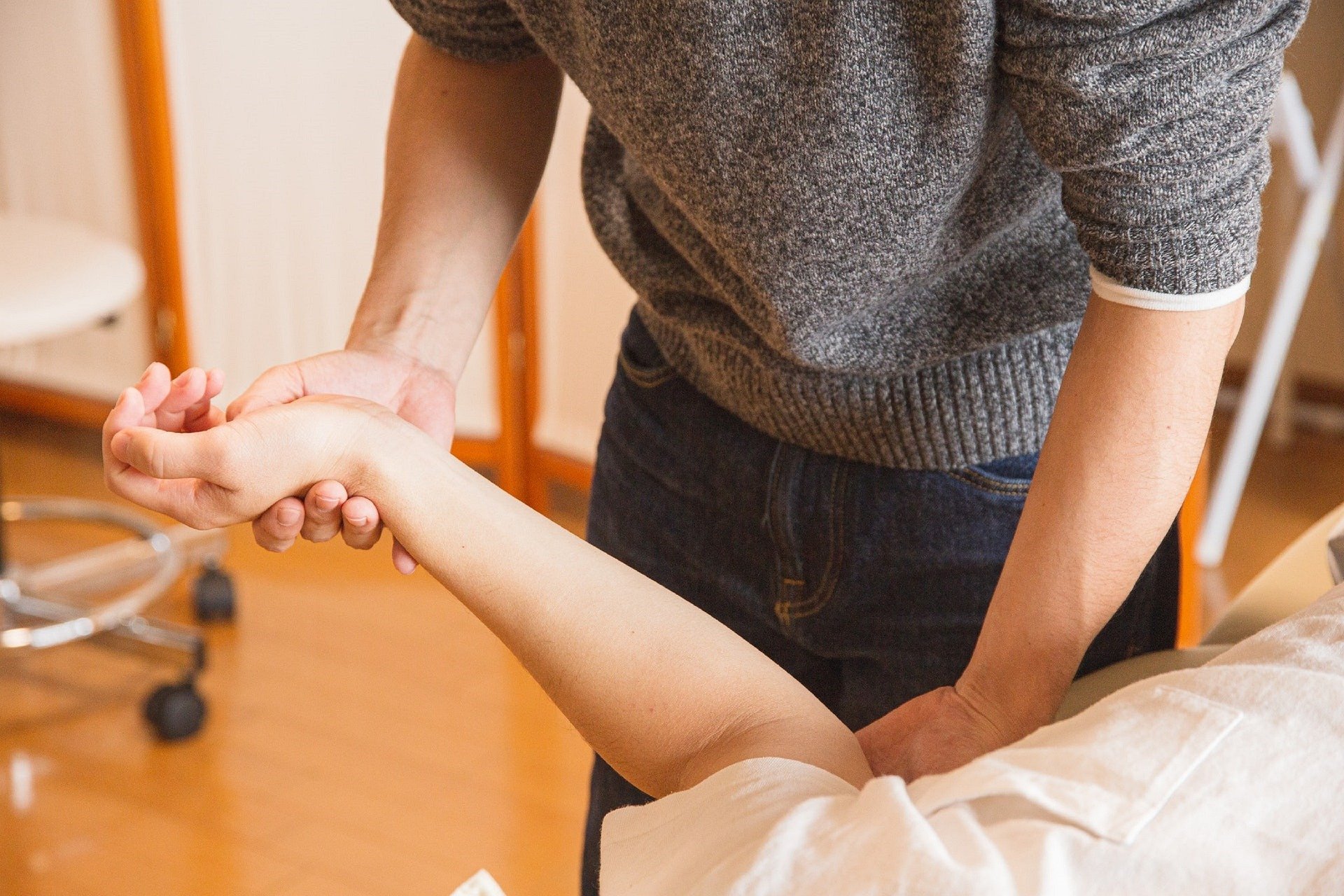
Physical therapy also helps seniors manage their pain. It helps with pain from arthritis, fibromyalgia, and chronic headaches without the harmful side effects of drugs. For those with osteoporosis, which affects over half of people over 50, it can strengthen bones and slow down bone loss.
It also helps seniors recover faster from injuries or sickness by reducing swelling and inflammation. It can manage symptoms of vertigo, Parkinson’s disease, and multiple sclerosis. Exceptional therapists can even teach older adults how to manage incontinence.
Physical therapy meets many needs, making a big difference in senior fitness and life quality.
Critical Components of Senior Physical Therapy Programs
Senior physical therapy programs are essential for elderly rehabilitation. They include many parts to help seniors move better and avoid falls. Let’s look at what makes these programs work well for seniors.
Strength Training Exercises
Strength training is vital for keeping muscles and bones strong. With the right exercises, seniors can keep getting stronger into their 90s. These exercises also improve seniors’ function and lower their injury risks.
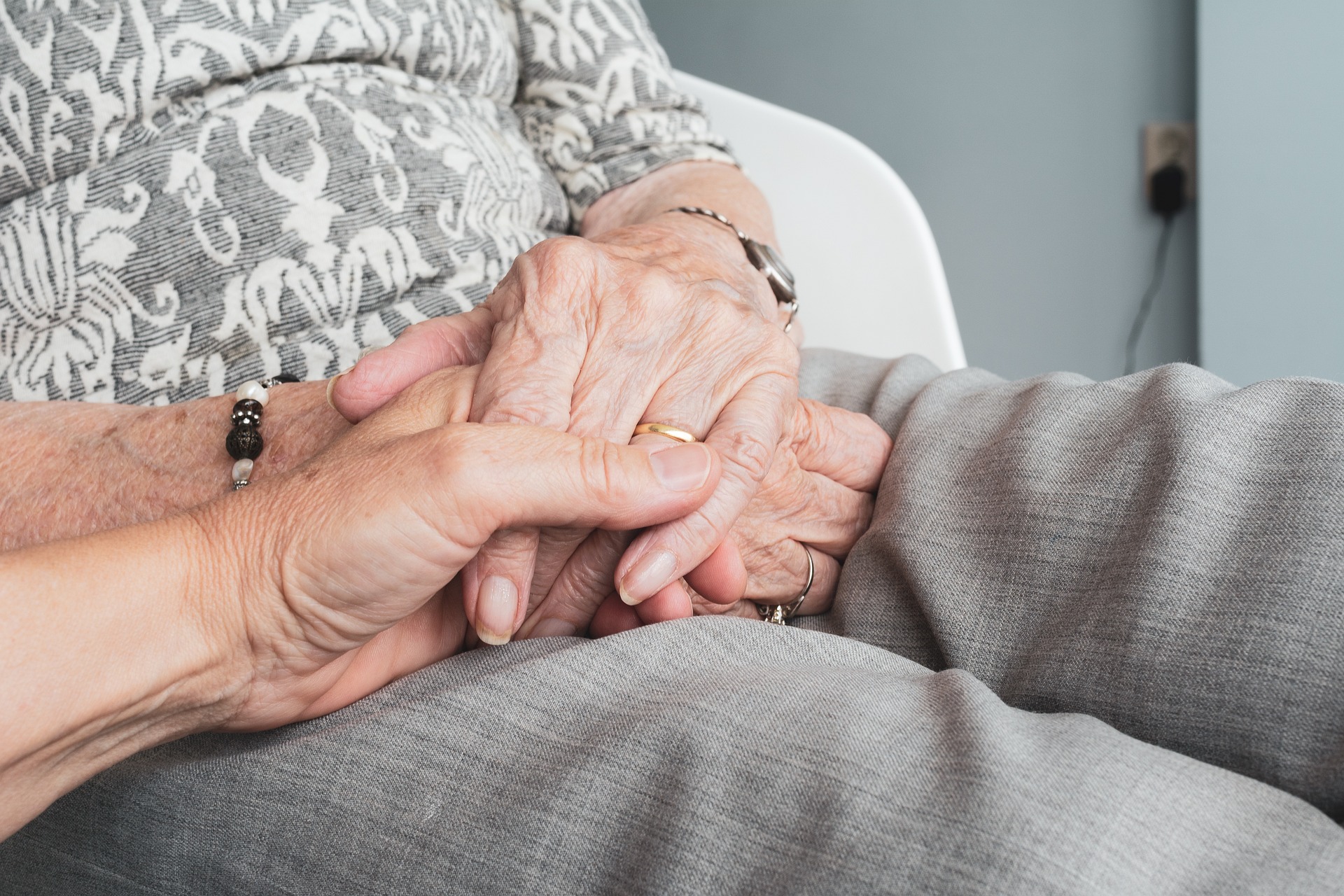
Balance and Coordination Activities
Falls are a significant cause of accidents for seniors, so balance exercises are necessary. Physical therapists check balance and find weak spots to make special activities. These activities significantly reduce the chance of falls and injuries.
Flexibility and Range of Motion Exercises
Flexibility exercises are vital for keeping joints healthy and avoiding stiffness. Physical therapists make special programs to boost seniors’ flexibility and movement. These exercises also ease pain from long-term conditions like arthritis or osteoporosis.
Functional Training for Daily Activities
Functional training aims to improve seniors’ performance at daily tasks. This training helps older adults stay independent and confident, especially after surgeries or injuries. With these main parts, physical therapy programs help seniors stay active longer.
Mobility Exercises for Older Adults
Keeping seniors mobile is very important. Losing movement can hurt both their physical and mental health. Regular exercises help keep muscles and joints working right, stopping many immobility cases. These exercises are vital for staying fit and preventing falls.
Chair-based exercises are perfect for seniors. Try 20 high knee marches to help your hip mobility. Do three rounds with breaks in between. For your upper body, do 8-10 seated rows. Work your core with eight torso twists to each side. These exercises are accessible at home, making them great for daily practice.
Other good exercises include the Upper Body Clam Shell, Semi-Sits, and Low-back Rotation Stretch. These exercises build muscle strength, make joints more flexible, and increase movement. For your legs, try ten double calf raises. To work your inner thighs, squeeze a pillow ten times. End with two sets of 10-12 heel slides on each leg.
Geriatric physical therapy offers special programs for preventing falls, managing chronic pain, and helping after surgery. These programs include strength training, balance exercises, and flexibility work, which improves mobility and quality of life for older adults. Always talk to a healthcare provider before starting any new exercise routine.
